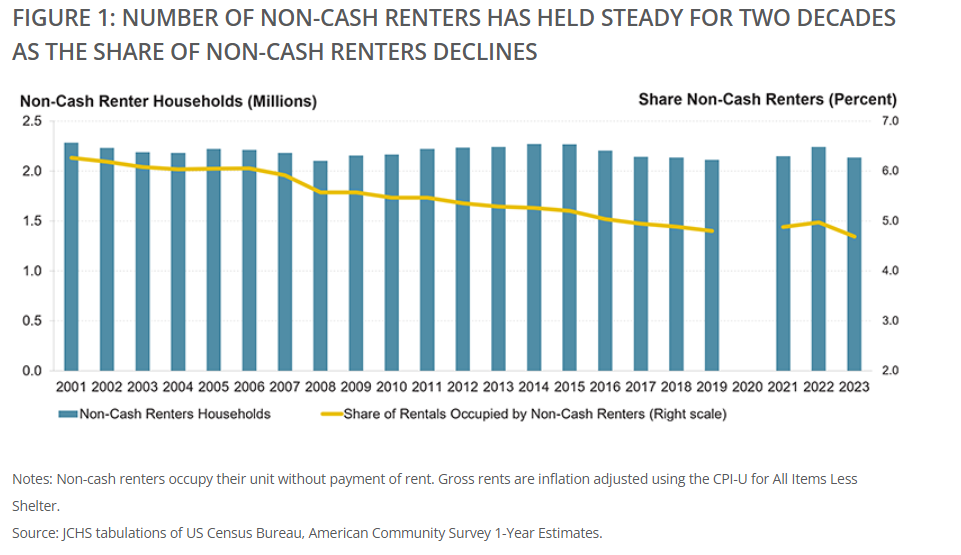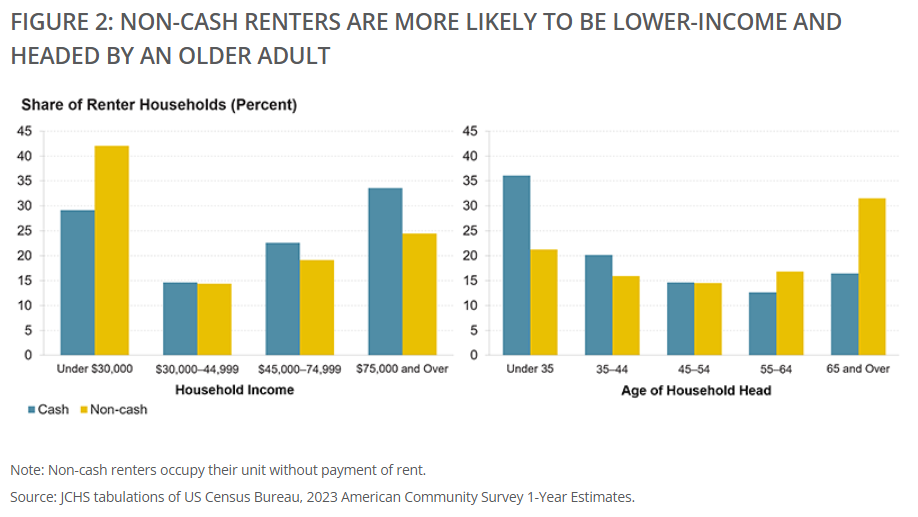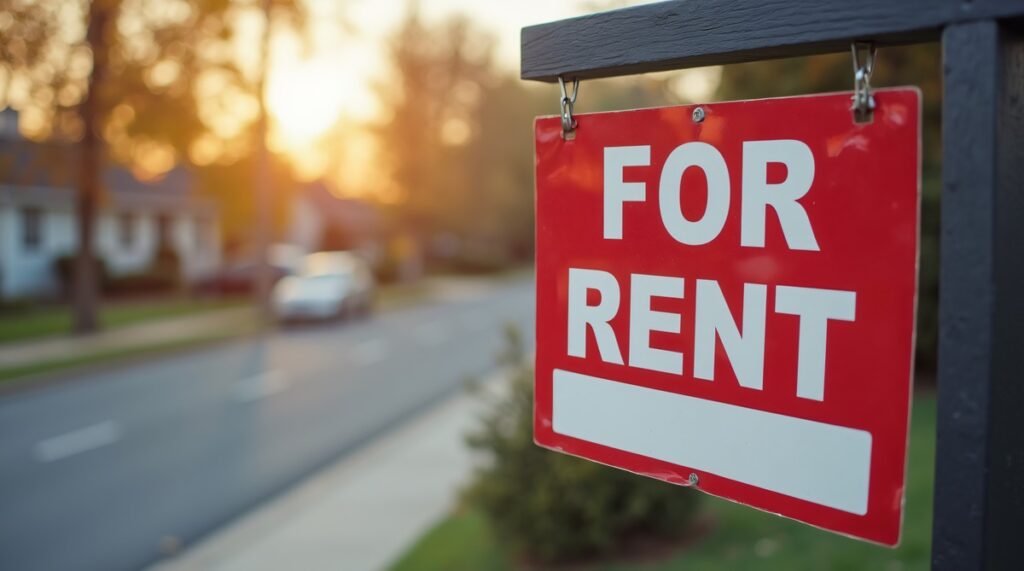In the ongoing conversation about housing affordability, non-cash rentals remain largely under the radar, despite serving as a crucial lifeline for over 2.1 million U.S. households. These arrangements—where tenants live in a home without paying rent—exist in three main forms: housing on military bases, homes provided as part of employment, and housing given for free by friends or family. While non-cash rentals have long provided relief for low-income and older adults, their share of the overall rental market has declined over the past two decades.
According to the latest analysis, non-cash renters made up 4.7% of all U.S. rental households in 2023, down from 6.3% in 2001. These renters are more common in lower-cost states, such as Arkansas, Maine, and West Virginia, where the median rent is about $1,030. In contrast, states with higher rents—like California, New Jersey, and Washington—have far fewer non-cash renters, as there’s a greater incentive for landlords to charge rent rather than offer housing for free.

Who Are Non-Cash Renters?
- Older and Lower-Income Households: Nearly one-third of non-cash renter households are headed by someone aged 65 or older, twice the rate of cash renters. They also tend to have lower incomes, with 42% earning under $30,000 annually, compared to 29% of cash renters.
- Living Arrangements: Most non-cash renters (68%) live in single-family homes, while just 19% reside in apartments. They are also more likely to live in older homes, with 60% of non-cash rentals built before 1980.
- Employment Status & Education: Many non-cash renters are not in the labor force, with 42% reporting no work in the past year (compared to 24% of cash renters). They also have lower rates of higher education, with only 24% holding a bachelor’s degree, versus 32% of cash renters.
The Role of Non-Cash Rentals in Housing Affordability
By providing free housing, non-cash rentals prevent millions from experiencing financial strain. In 2023, 52% of cash renters were cost-burdened—spending over 30% of their income on rent—and 89% of those earning under $30,000 struggled with housing costs. Without non-cash rental options, half of these households would face cost burdens if charged even lower-tier rent, and 62% would be burdened if they paid median rent.

Despite the benefits, the majority of low-income renters do not have access to such arrangements. As rental costs hit record highs, the need for expanding lower-cost housing options and boosting rental assistance programs is greater than ever.
Click here for more on the Harvard Joint Center for Housing Studies’ analysis of non-cash rentals.








